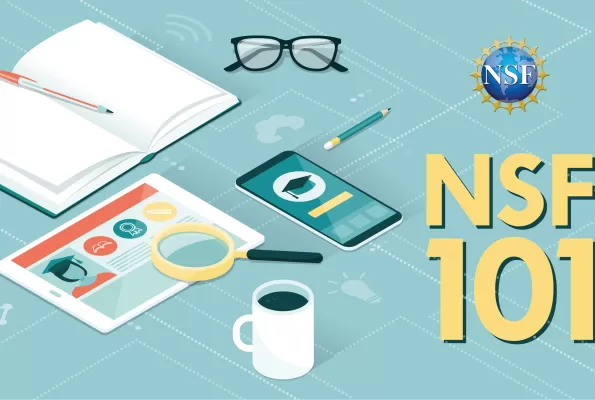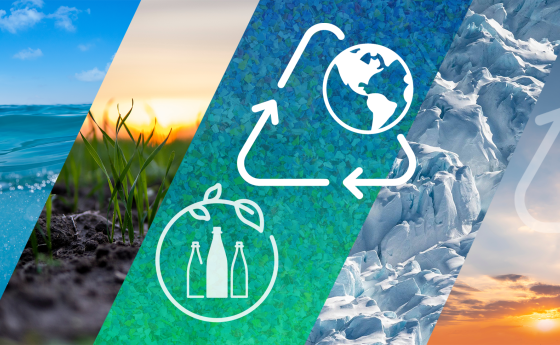
NSF 101: Move ideas out of the lab with 4 NSF technology translation programs
Is an output of your science and engineering research ready to be “translated” into a product, service or application? Many discoveries have potential applications and uses to meet real-world needs, solve societal issues or create new markets. The U.S. National Science Foundation advances fundamental research leading to breakthrough discoveries, and also supports researchers at any career stage to build upon their research results, creating solutions that address complex societal issues or market needs.
But what if you don’t have any experience taking your research to the next phase beyond the lab? Where do you begin? Don’t fret -- you’re not alone! In fact, most innovators funded by NSF are new to technology translation, or the process of taking intellectual property and working with people or organizations best suited to bring that to the public in the form of products, services or applications, among other forms.
NSF has several programs to help in the process of identifying opportunities for innovation and translation. You can get NSF funds to develop your technology, test how customers or end-users use your solutions, and learn how to develop a sustainability or business plan.
Below are four NSF programs that can help accelerate your cross-cutting research, bring your innovations to market, and improve societal well-being.
1. NSF Innovation Corps (I-Corps)
The I-Corps program is an experiential learning opportunity to help scientists and engineers assess the potential to translate their innovation from the lab to the marketplace. Researchers participate in the seven-week program as a team of three that consists of a technical lead, entrepreneurial lead and business mentor, and learn the art of customer discovery and business planning from seasoned entrepreneurs. Participants must have been funded by NSF as a faculty member, student or other researcher in the last five years. The program is open to all scientific disciplines.
Read more on the I-Corps website.
Funding Amount: $50,000 over six months.
2. Partnerships for Innovation (PFI)
The Partnerships for Innovation program gives scientists and engineers the opportunity to increase the impact of their NSF-funded research discoveries by developing their technology into a prototype or proof of concept. The intended outcomes are: commercialization of new intellectual property derived from NSF research outputs; creation of new or broader collaborations with industry, including increased corporate sponsored research; licensing of research outputs to third-party corporations or startup companies funded by a PFI team; and the training of future innovation and entrepreneurial leaders.
PFI accepts proposals in two broad tracks:
-
Technology Translation supports commercial potential demonstration projects for academic research outputs in any science and engineering discipline. This demonstration is achieved through a proof of concept, prototyping, technology development and scale-up work.
-
Research Partnerships supports complex, multifaceted technology development projects that are typically beyond the scope of a single researcher or institution, and requires a multi-organizational, interdisciplinary, synergistic collaboration.
To learn more about PFI, visit the program website.
Funding Amount: PFI Technology Translation projects are funded at up to $250,000 for 18 months; and PFI Research Partnerships projects are funded at up to $550,000 for three years.
3. America's Seed Fund, powered by NSF
NSF funds hundreds of deep-tech startups annually to accelerate the translation of discoveries into products and services with societal impact. Each startup can receive up to $2 million to support translational research and development. NSF helps teams navigate the earliest stages of technology translation, investing roughly $200 million annually in startups. In the last five years, these companies have gone on to raise billions in follow-on capital, and the portfolio has had more than 100 exits. NSF-supported startups are also creating technologies to help with the COVID-19 pandemic and to address climate change.
To learn more about America's Seed Fund, visit the program website.
Funding Amount: Phase I projects are funded at up to $256,000 over six to 12 months; and Phase II projects are funded at up to $1 million over 2 years with opportunities for additional funding.
4. Convergence Accelerator
The Convergence Accelerator builds upon basic research and discoveries to accelerate solutions toward societal impact. Each funded team comprises researchers, innovators, and other partners from the academic, industry, nonprofit, government and other sectors. This creates a multidisciplinary approach and cross-cutting partnerships to develop a solution to an established problem, from a new perspective.
Awarded teams enroll in an innovation curriculum under the guidance of mentors and coaches who help steer their projects toward high-impact, societally focused deliverables. This hands-on program is recommended for researchers or innovators who are still advancing their research and are interested in gaining use-inspired research skills such as human-centered design, customer discovery and early-stage prototyping.
Learn more about Convergence Accelerator and its most recent program solicitation.
Funding Amount: Phase I projects are funded at up to $750,000 for 12 months; and Phase II projects are funded at up to $5 million over 2 years.





